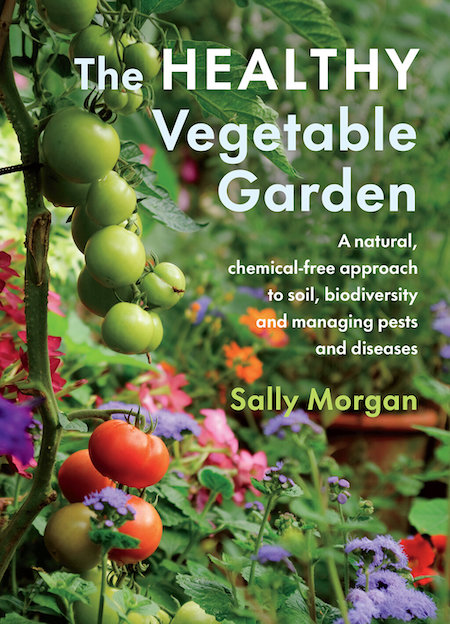
A natural, chemical-free approach to soil, biodiversity and managing pests and diseases”
By Sally Morgan
Chelsea Green Publishing, 2021
224 pages, paperback, $29.95
The secret to a healthy garden begins with the soil. “There are no short cuts,” writes Sally Morgan, who warns that it takes time to build healthy soil. But don’t worry, Morgan shows how gardeners can work with nature to build their soil, grow healthy plants and decrease the populations of pests and diseases. And she does so in a conversational tone, much like chatting with a friend over the garden fence.
Fittingly, the first section begins with soil basics. Soil is, Morgan says, a mix of minerals and organic matter, air and water. But it’s also alive with fungi, bacteria, arthropods and other organisms. She discusses soil structure, pH and how to assess your soil. Then she dives into different ways of regenerating soil: no-dig gardening, composting, planting cover crops and mulching. My favorite section is where Morgan explains the value of leaf litter.
“Fallen leaves create a mulch that protects the soil from winter weather and suppresses weeds,” she writes. They add nutrients and tilth, and provide habitat for beneficial beetles and butterflies. But don’t let them pile up on your bulbs because they trap moisture and can encourage rot (something this gardener learned the hard way!). Morgan provides solid guidance on how to start and maintain a compost pile, lists several options for cover crops, and shows how to make a deep mulch bed.
Part two focuses on pests and predators. Morgan’s first rule is to know your enemies, the sap suckers, borers, defoliators, deflowering insects, and gall-makers. And those are just the insects! There are a host of pathogens that can infect plants as well. Spots, rust, wilts, mildews, viruses, blights, cankers — and with the changing climate new threats are emerging. Morgan outlines simple things gardeners can do to keep their plants healthy, from thinning and crop rotation to proper tool cleaning. She also devotes an entire chapter to natural predators and ways to encourage them to hang out and eat your garden pests.
Diversity, Morgan explains, is key to helping natural ecosystems withstand environmental challenges. Same thing with gardens. She shares strategies on finding plants to support pollinators, companion plants, and plants that can serve as trap crops. Morgan talks about perennials and polyculture, seed selection and seed saving. Then she dives into defensive gardening: biocontrol (beneficial nematodes, parasitic wasps and more); plant defenses; compost teas and foliar sprays; barriers (row covers); and homemade sprays. Did you know you can use milk to protect against mildew?
The last section is a 40-page A-to-Z guide to pests and diseases. There’s a paragraph or so about most of the pests a gardener is likely to find, from ants and aphids to wireworms, as well as the most common plant diseases. Unfortunately the limitations of space don’t allow many photos. Still, this book is a good introduction for someone putting in their first garden, and an informative read for the gardener transitioning to organic methods.
Sue Smith-Heavenrich, Candor, New York
